CEA-Leti researchers will present two invited papers at the International Conference on Frontiers of Characterization and Metrology for Nanoelectronics 2011 (IC-FCMN 2011), May 23-26 in Grenoble.
May 2nd, 2011
Read more
New MIT particles could be used to deliver cancer drugs to nearly any type of tumor.
May 2nd, 2011
Read more
Mit einem denkbar winzigen Speicher koennte sich ein leistungsfaehiger Quantencomputer konstruieren lassen.
May 2nd, 2011
Read more
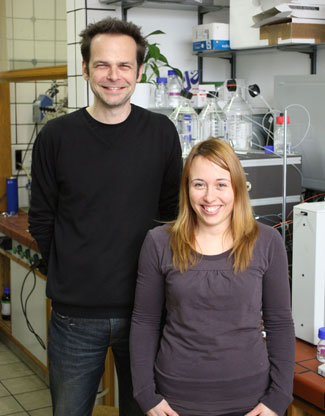 An international team under the leadership of chemists from Innsbruck succeeded in monitoring the S-adenosylmethionine (SAM) II-riboswitch in action. SAM is a cofactor which is involved in many metabolism processes by transferring methyl groups to other molecules.
An international team under the leadership of chemists from Innsbruck succeeded in monitoring the S-adenosylmethionine (SAM) II-riboswitch in action. SAM is a cofactor which is involved in many metabolism processes by transferring methyl groups to other molecules.
May 2nd, 2011
Read more
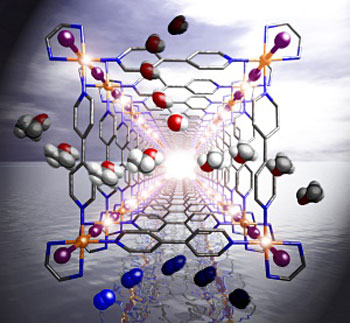 Polymerization of a metal-organic complex with a square framework gives a nanotube structure with controllable electronic and sorption properties.
Polymerization of a metal-organic complex with a square framework gives a nanotube structure with controllable electronic and sorption properties.
May 2nd, 2011
Read more
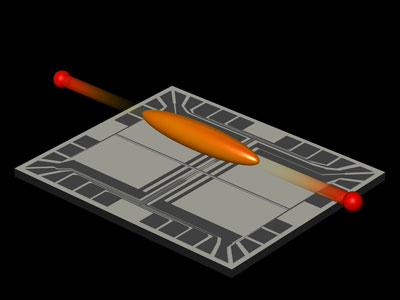 Objects that are well separated in space but still cannot be understood separately belong to the profoundest mysteries of quantum physics. Pairs of photons are prominent examples of such systems. They allow the teleportation of quantum states or tap-proof data transfer using quantum cryptography. In future, such experiments will not be restricted simply to photons: at the Vienna University of Technology, a method has been developed to create correlated pairs of atoms using ultracold Bose-Einstein condensates.
Objects that are well separated in space but still cannot be understood separately belong to the profoundest mysteries of quantum physics. Pairs of photons are prominent examples of such systems. They allow the teleportation of quantum states or tap-proof data transfer using quantum cryptography. In future, such experiments will not be restricted simply to photons: at the Vienna University of Technology, a method has been developed to create correlated pairs of atoms using ultracold Bose-Einstein condensates.
May 1st, 2011
Read more
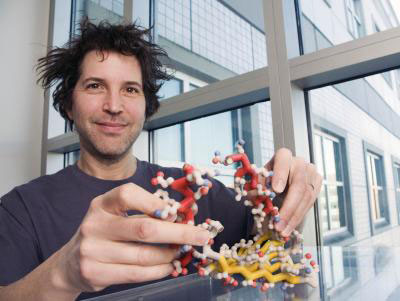 Determining the molecular configuration of proteins is important in nanotechology, drug design, disease research and many other fields.
Determining the molecular configuration of proteins is important in nanotechology, drug design, disease research and many other fields.
May 1st, 2011
Read more
High-performance nanotech materials arrayed on a flat panel platform demonstrated seven to eight times higher efficiency than previous solar thermoelectric generators, opening up solar-thermal electric power conversion to a broad range of residential and industrial uses.
May 1st, 2011
Read more
Most of the body's cells communicate with each other by sending electrical signals through nano-thin membrane tubes. A sensational Norwegian research discovery may help to explain how cells cooperate to develop tissue in the embryo and how wounds heal.
May 1st, 2011
Read more
Carbon nanofibers assembled into photonic crystals change color as activated charcoal filters become saturated with dangerous vapors.
May 1st, 2011
Read more
Syracuse company tops more than 20 student-led teams from colleges and universities across the state to win contest featuring over $100,000 in prizes.
Apr 29th, 2011
Read more
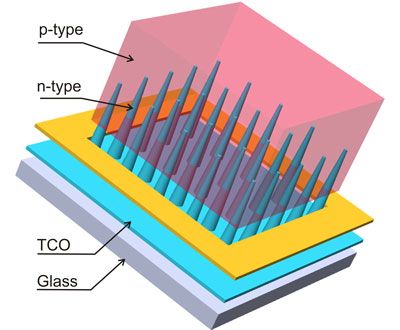 With the creation of a 3-D nanocone-based solar cell platform, a team led by Oak Ridge National Laboratory's Jun Xu has boosted the light-to-power conversion efficiency of photovoltaics by nearly 80 percent.
With the creation of a 3-D nanocone-based solar cell platform, a team led by Oak Ridge National Laboratory's Jun Xu has boosted the light-to-power conversion efficiency of photovoltaics by nearly 80 percent.
Apr 29th, 2011
Read more
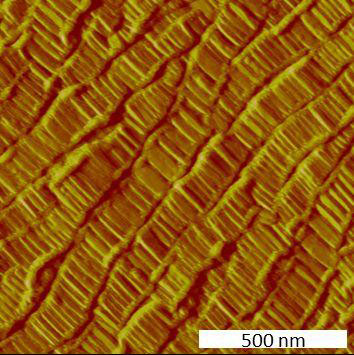 Materialwissenschaftler der Uni Jena erforschen Proteinschichten in kuenstlichen Gelenken.
Materialwissenschaftler der Uni Jena erforschen Proteinschichten in kuenstlichen Gelenken.
Apr 29th, 2011
Read more
A new Open Access book, "Advances in Nanocomposites: Synthesis, Characterization and Industrial Applications" has just been published on the InTechOpen reading platform.
Apr 29th, 2011
Read more
Scientists have managed to switch-on and switch-off a semiconductor optical cavity within a world-record short time of less than 1 picosecond.
Apr 29th, 2011
Read more
 Reversible control of electrical and thermal properties could find uses in storage systems.
Reversible control of electrical and thermal properties could find uses in storage systems.
Apr 29th, 2011
Read more








 Subscribe to our Nanotechnology News feed
Subscribe to our Nanotechnology News feed